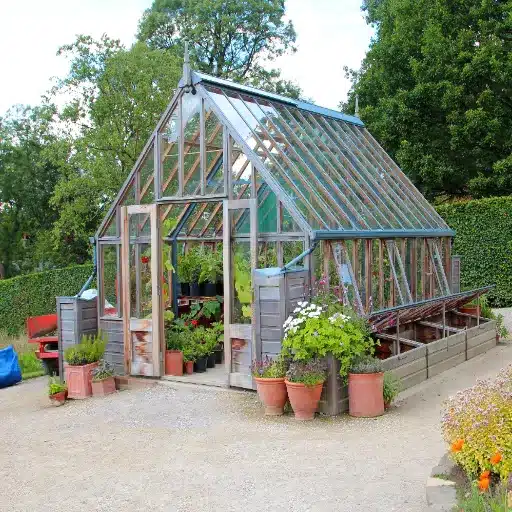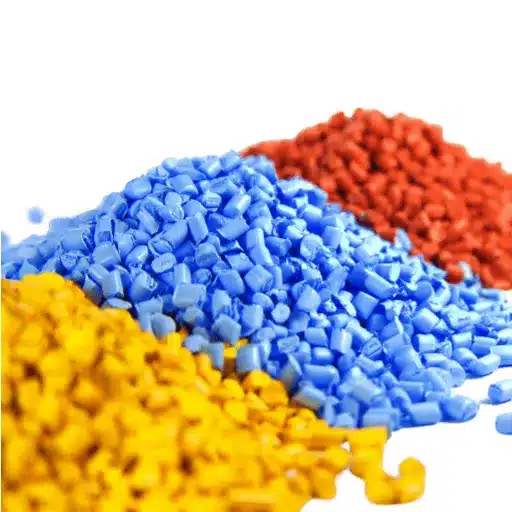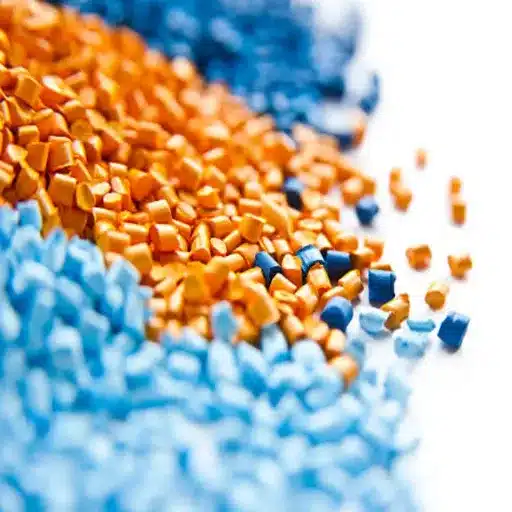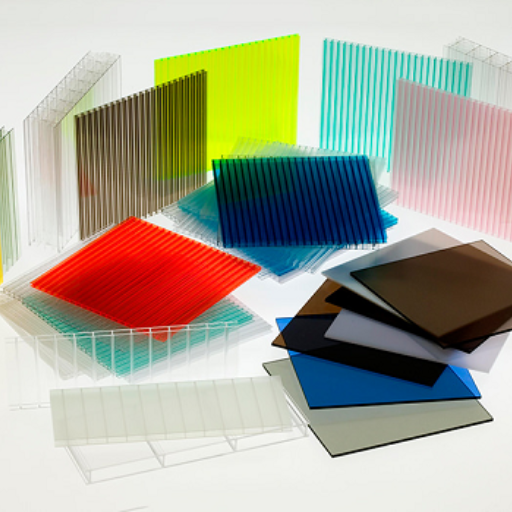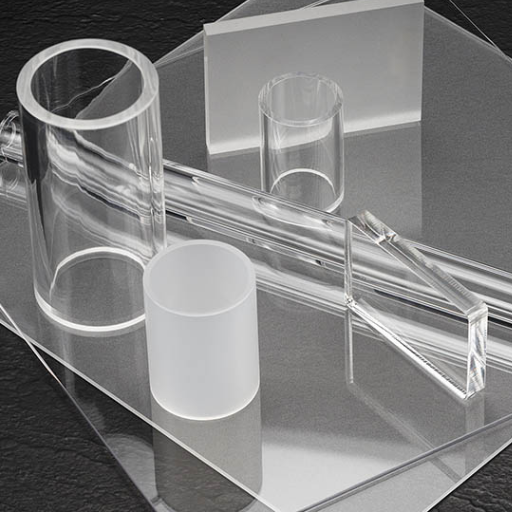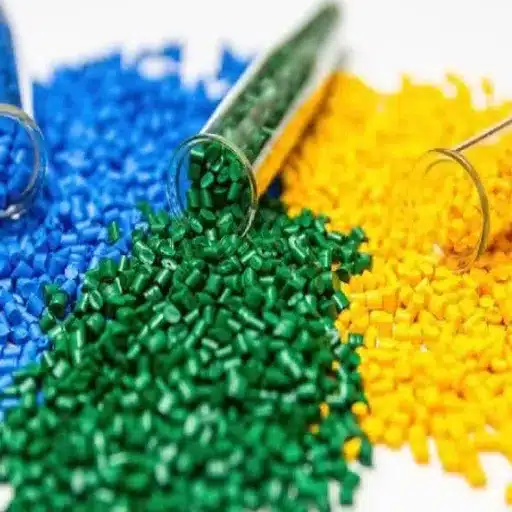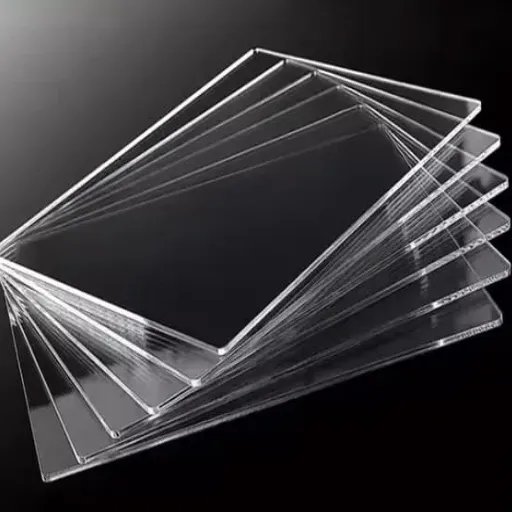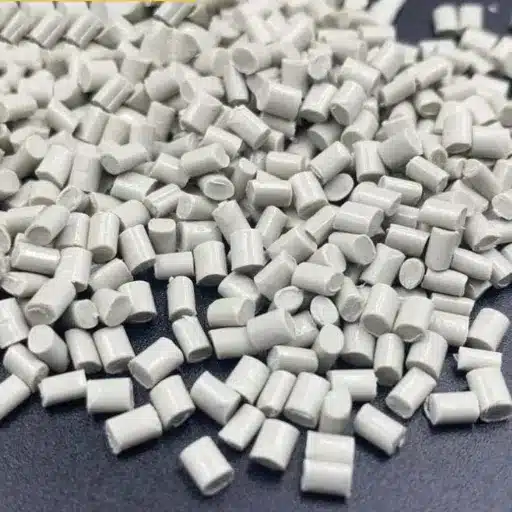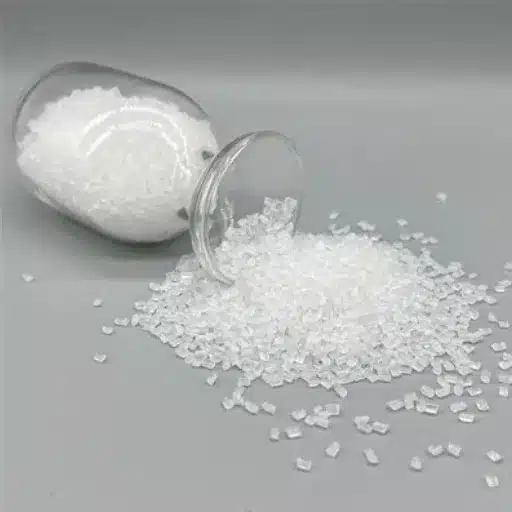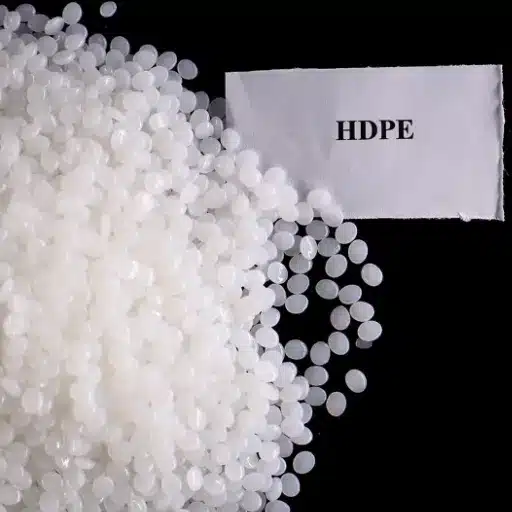High Density Polyethylene (HDPE) injection molding has completely changed the plastic manufacturing approach in terms of industries. HDPE, as the most famous plastic, is known for its superior quality and versatility; moreover, it is also considered the most affordable among all the plastics. Its applications range from packaging to the production of automotive parts and even household items, and the list of benefits is just as long and diverse. You will find in this guide all that you need to know concerning HDPE, plastic and molding services respectively. Our intention is to provide you with a thorough understanding of the specific HDPE characteristics, the injection molding process along with its benefits and thus equip you with the right knowledge to make the best choices for your business or artistic projects.
Understanding HDPE and Its Applications
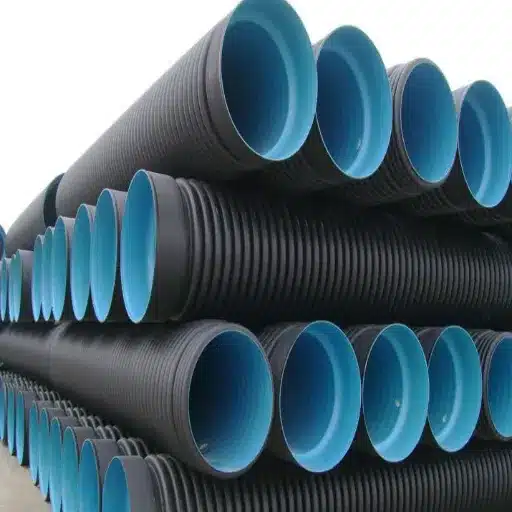
What is High-Density Polyethylene (HDPE)?
High-Density Polyethylene (HDPE) is a multifunctional thermoplastic polymer derived from crude oil. Because of its great strength-to-density ratio, durability, and impact and chemical resistance, it is among the top plastics in the world in terms of consumption. Among the properties of HDPE that make it a preferred material are its light weight and flexibility while at the same time providing strong structural support.
🔬 Key Characteristics of HDPE:
- ✓ Lightweight yet structurally strong
- ✓ Excellent strength-to-density ratio
- ✓ High impact and chemical resistance
- ✓ Low moisture absorption rate
- ✓ Corrosion resistant
- ✓ Highly recyclable for sustainable manufacturing
The spectrum of applications for this material is unbelievably wide, including packaging, piping, construction materials, and even 3D printing filaments. On top of that, the recycling of HDPE is so easy that it is considered the best choice for sustainable manufacturing processes. Its versatility to various production methods, like injection molding, are the traits that guarantee its wide use in industries.
Common Applications of HDPE in Consumer Products
Due to its multifaceted nature, toughness, and eco-friendly traits, HDPE is one of the non-toxic plastics that are most frequently encountered in consumer products. It is extensively used in the production of common items like food storage containers, refillable water bottles, and plastic grocery bags. Its ability to resist chemicals and being safe for food products makes it perfect for the packaging of perishable items such as milk, juices, and sauces.
🏠 Household Products
Detergent bottles, shampoo containers, cleaning product packaging – strength and lightweight convenience
🌳 Outdoor Applications
Garden furniture, playground items, large rubbish bins – excellent UV and moisture resistance
♻️ Green Applications
Recycled construction materials, eco-friendly products – sustainable and recyclable solutions
Moreover, HDPE is a major material used for making household products such as detergent bottles, shampoo containers, and cleaning product packaging that provide both strength and convenience in terms of being lightweight. Recent statistics show a continuous increase in the use of HDPE for green applications like the manufacture of recycled materials for construction and green products. The coexistence of multi-functionality and recyclability is the reason why HDPE is regarded as a material that can meet both consumer and environmental needs in the same way.
Advantages of Using HDPE Material
High-Density Polyethylene (HDPE) is a material characterized by its numerous advantages which form the basis for wide-spread usage in many industries. Among the most important qualities of the material is superb durability and the resistance to stress from nature, including sunlight, and water, as well as chemical exposure. This quality makes HDPE the right choice for such applications as outdoor furniture, pipes, and storage containers. In addition to that, it is both light and tough which makes it easy to move around and energy-efficient in production and distribution.
🌍 Sustainability Benefits:
The latest data portray the positive role of HDPE in sustainable practices, especially recycling initiatives. The recyclable nature of HDPE plays an active role in this trend, as consumers and industry want more eco-friendly solutions.
Key Point: The quality of the HDPE produced using recycled material is the same as that of a virgin grade, which means less demand for pulling resources from Mother Earth, that is less energy-consuming and is more contaminating. This mixture of properties makes HDPE not only a practical but also a sustainable choice.
The Injection Molding Process

Injection Molding Overview
Injection molding is one of the most popular methods of manufacturing parts by injecting molten material into the mold. The process is very useful when making parts with very complex designs, and it provides exceptional accuracy and economical use of materials. The most common thermoplastics, like HDPE, are normally the drastic reason behind the efficiency and strength. The process, namely the material preparation, mold design, injection, and cooling, involves a number of steps, all of which together guarantee the production of high-quality parts.
📊 Industry Trend: Knowledge of this topic combined with the recent search trends tells us that injection molding is still one of the mainstay solutions of the manufacturing sector. Data from the search trends indicated that there is a continuously increasing interest regarding eco-friendly techniques in the injection molding sector especially the use of recyclable materials such as HDPE. This shows that there is increasing awareness and demand for the materials and processes that are compatible with the environment.
Manufacturers can satisfy consumer and environmental needs at the same time by utilizing recycled materials in the injection molding process, thus maintaining product quality.
Injection Molding of HDPE Phases
The injection molding cycle for HDPE consists of several crucial phases that guarantee the creation of quality and favorable products.
⚙️ The Six-Phase HDPE Injection Molding Process
1Preparation of the Material
Moisture from HDPE pellets or recycled material is removed by drying so that moisture does not result in defects during the final product. Cleaning and making sure there is no contamination of the material is of utmost importance for keeping the product’s integrity.
2Melting and Plasticizing
The material is loaded into the heated barrel of the injection molding machine. The HDPE pellets are melted and made plastic by rotating screws and heating elements until they get to the required viscosity.
3Injection into the Mold
The molten HDPE is injected into a mold that has been designed beforehand, under very high pressure. The accuracy of this step is very important as it specifies the shape and detail of the final product. Latest technology uses very precise temperature and pressure controls to reduce waste.
4Cooling Phase
When the mold is filled, the material is cooled and hardened. It is critical that cooling be uniform to prevent warping or shrinkage, hence maintaining the product’s dimensions.
5Ejection of the Finished Product
The molded part is removed from the mold after cooling. Automation brings advantages to this stage in terms of increased production rate with less operating cost.
6Post-Processing and Recycling
Trimming and usually recycling of excess material (e.g. sprues, runners) are done. Recycling policies will eventually help lessen waste generation, thereby sustaining the environment.
🌱 Sustainability Note: A major increase in global searches for the terms “sustainable injection molding” and “recycled HDPE products” has been reported recently. This denotes a rising consumer interest in the so-called greener manufacturing processes. Manufacturers not only meet this rising demand but also take part in raising environmental standards by carrying out these precise steps and being the first in line for the next recycled HDPE production.
Injection Molds for HDPE
With the latest trend data, it seems that there is an increasing interest in the specific types of injection molds used for the production of HDPE. The latter offers a vast range of application possibilities thus the manufacturers depend on multiple molds.
| Mold Type | Description & Applications |
|---|---|
| Two-Plate Molds | Most widely used for simple HDPE products where precision and ease of molding are important. Single parting line, suited for bottles or containers. |
| Three-Plate Molds | Used for complex molding requirements allowing items with undercuts or tricky geometries. Ideal for high-detail products made with recycled HDPE. |
| Hot Runner Molds | Provide better flow of material and minimize waste, favored for eco-friendly HDPE production. Less scrap generation aligns with sustainability focus. |
| Cold Runner Molds | Very economical for small to medium production. Often used with recycled HDPE to make durable and cost-effective items. |
Incorporating these molds along with recycled HDPE in the production system enables the manufacturers to cater to the market demand for green production and at the same time avail of the benefits of the robust and efficient manufacturing techniques that are currently trending in the search queries.
Properties of HDPE for Injection Molding
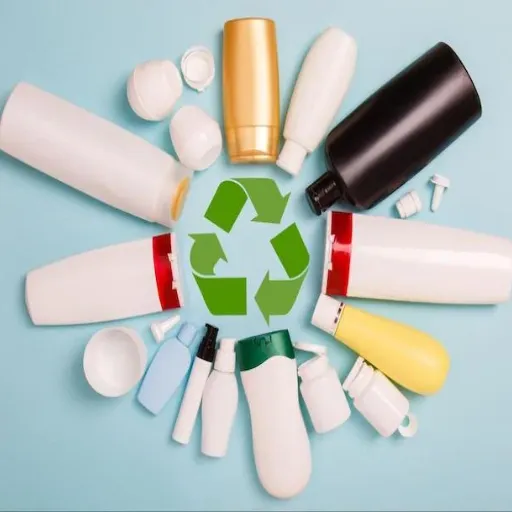
Density and Impact Resistance of HDPE
HDPE is a high-density polyethylene material that is used for a range of industrial applications mainly due to its density and impact resistance properties that have been combined into one by the injection molding method. It usually has a density that ranges between 0.93 to 0.97 g/cm³; thus, it can be said it is lightweight and at the same time durable. This property of HDPE makes it extremely suited for manufacturing applications that require strong but still lightweight components.
💪 Impact Resistance Highlights:
According to a recent study conducted by one of the search engines, the interest in the impact resistance properties of HDPE has significantly increased within the automotive, packaging, and construction industries.
- Excellent capacity to resist damage from outside impacts
- Can bear considerable force without developing cracks or breaking
- High molecular weight ensures long-term reliability
- Perfect for applications requiring toughness and resilience
Thermal and Chemical Resistance of HDPE
One of the major advantages of HDPE (High-Density Polyethylene) is its exceptional thermal resistance and chemical resistance properties, which justify its use in various industries and multiple environments.
🌡️ Thermal Resistance
Temperature Range: -40°F to 176°F (-40°C to 80°C)
Can perform well under both freezing and moderately hot conditions. Applications include pipes, storage tanks, and containers.
🧪 Chemical Resistance
Resistant to: Acids, bases, organic solvents, degreasing agents
Will not crumble in stressful environments or lose properties when subjected to corrosive conditions.
HDPE has a remarkable chemical resistance profile—the manufacturer guarantees HDPE for a wide variety of applications that use other less efficient materials that may get old quickly over time due to the substances. That is why HDPE is a must in the chemical processing, agriculture, wastewater management, and similar fields where both thermal and chemical tolerance are vital. So, with its capability to face the most challenging conditions, HDPE still remains the material of choice in the industries needing reliability and high-performance materials.
Comparative Analysis of HDPE and Other Plastics
When looking at HDPE alongside other plastics that are widely used such as polypropylene (PP) and polyvinyl chloride (PVC), it is easy to see why HDPE is a preferred choice with its unique properties.
| Property | HDPE | Polypropylene (PP) | PVC |
|---|---|---|---|
| Tensile Strength | Superior | Good | Moderate |
| Impact Resistance | Excellent (even at low temps) | Poor at low temperatures | Moderate |
| Chemical Resistance | Excellent to corrosive materials | Good | Limited (degrades in high heat) |
| Recyclability | #2 Rating – Highly recyclable | Recyclable | Difficult (hazardous chemicals) |
| Energy Consumption | Lower in production | Moderate | Higher |
HDPE ensures not only tensile strength but also impact resistance are superior to these plastics; thus, it is the choice for designing products to be used under stress in the first place. For example, recent research reports point out that, besides being stronger, HDPE is also more resistant to the effects of the environment, thus it can stand higher environmental pressures than PP, which is easily broken at extremely low temperatures.
Besides that, the chemical resistance of HDPE is greater than that of PVC, especially in the case of corrosive materials, where PVC is limited due to the possibility of degradation in high heat conditions. Another major point is recyclability. HDPE has a recycling rating of #2 so it is among the most prevalent recycled plastics. On the other hand, some kinds of PVC are difficult to recycle because of the complicated composition and the hazardous chemicals released during processing. In terms of sustainability, HDPE also consumes less energy in production compared to some of the alternatives, which helps to lower its overall impact on the environment.
These characteristics emphasize the adaptability of HDPE and are the reason why the industries continue to choose it over other plastics for applications involving extreme conditions, long-term durability, and environmental considerations.
Injection Mold Design Considerations

Factors Influencing Mold Design for HDPE
The design of molds for HDPE (High-Density Polyethylene) requires the consideration of a number of factors that affect the performance and efficiency of the production process.
🔧 Critical Design Factors:
- Shrinkage Rate: HDPE has a comparatively high shrinkage ratio. Must be adequately compensated for accurate dimensions.
- Wall Thickness Uniformity: Non-uniformity can cause warping, stress points, or structural deficiencies.
- Gate Design: Right gate type and placement minimize flow marks or voids, ensuring efficient material flow.
- Cooling Time Optimization: Sufficient cooling necessary for desired part strength and surface finish.
- Channel Designs: Efficient cooling channels regulate the cooling process effectively.
The shrinkage rate, which is a major factor, must be given special attention since the shrinkage ratio of HDPE is comparatively high among other plastics. If these changes are not adequately compensated for, the resulting dimensions will not be accurate. Uniformity in wall thickness is another critical factor because non-uniformity in wall thickness can cause the molded part to warp, develop stress points, or suffer from other structural deficiencies.
Moreover, the design of the gate is very important in ensuring quick and efficient material flow into the mold cavity. In the case of HDPE, the right gate type and placement have been selected to minimize problems associated with the formation of flow marks or voids. Besides, cooling time and cycle optimization are very important, and sufficient cooling of HDPE is necessary to get the desired part strength and surface finish.
🌱 Sustainability Trend: A growing number of producers are adopting the technique of using advanced recyclable tooling components or eco-friendly production methods which are in line with the global trend of reducing the environmental impact. These considerations bring to light how modern innovations and changing industry standards are improving HDPE molding.
Best Practices for Designing Injection Molds
Injection molding design is not only a creative process but also a science that requires a thorough and sometimes meticulous approach in order to achieve the highest standards of performance, efficiency, and sustainability. Now that you are looking at industry data and trends here are some of the main best practices you should consider:
✅ Essential Best Practices Checklist
1. Material Selection
The material for the mold should be of high quality and durable like hardened steel or aluminum. Think about the resin that is being used and its compatibility with the mold material to ensure a long and good performance.
2. Efficient Cooling Systems
The design of the cooling channel should be optimized to help with heat dissipation and reducing cycle times. Use conformal cooling techniques combining advancements like 3D printing for uniform cooling and higher productivity.
3. Draft Angles in Design
The mold design should include correct draft angles to allow for easy removal of parts, hence surface defects are minimized and mold wear is reduced.
4. Gate Location and Size
Proper placement and sizing of the gates are essential for consistent material flow and even filling of the cavities. Consider the aesthetic and structural aspects of the final product while deciding on gate locations.
5. Sustainability Measures
Due to the escalating environmental concerns, incorporate eco-friendly practices like using recyclable mold inserts or opting for energy-efficient machinery. Going green not only saves costs in the long run but also fulfills consumers’ and regulators’ expectations.
🤖 Technology Trend: The latest search trends indicate that energy efficiency and digital mold monitoring tools are getting more attention. This includes the use of smart mold sensors to monitor real-time performance data such as pressure, temperature, and cycle duration. The implementation of such technologies not only helps streamline operations and prevent downtimes but also ensures uniformity in the quality of the products.
Common Challenges in Designing HDPE Molds
Molding problems in HDPE have many sources, and the most important one is that HDPE has a very peculiar nature which requires extreme precision during the molding process. The latest data from search trends reveal that engineers and manufacturers are becoming more and more proactive in trying to overcome the two issues of warping and shrinkage.
| Challenge | Cause | Solution |
|---|---|---|
| Warping | Different cooling rates in the mold | Uniform cooling system design |
| Shrinkage | High thermal contraction of HDPE | Proper compensation in mold design |
| Wall Thickness Issues | Deviations in thickness | Maintain uniform wall thickness throughout |
| Short Cycle Times | Demand for faster production | Advanced cooling techniques and molds |
These two problems are rather common during HDPE processing. Warping can take place when there are different cooling rates in the main mold, and the shrinkage issue is due to the fact that the thermal contraction of HDPE is pretty high. Uniform wall thickness is another significant challenge that is made evident by the search data. Wall thickness deviations can either make the product less strong or result in the filling not being complete during the molding process.
💡 Smart Solution:
The application of clever solutions such as digital mold monitoring tools is being adopted more and more as a way to overcome these challenges. Having the real-time data on the parameters like temperature, pressure, and cooling times gives the opportunity for very accurate adjustments to be made which increases the consistency of the results and reduces the waste of materials. Deploying advanced tools and insights in tackling these challenges, manufacturers are more able to cope with strict production schedules while still delivering the superior quality that has become synonymous with HDPE products.
Injection Molding Applications and Innovations
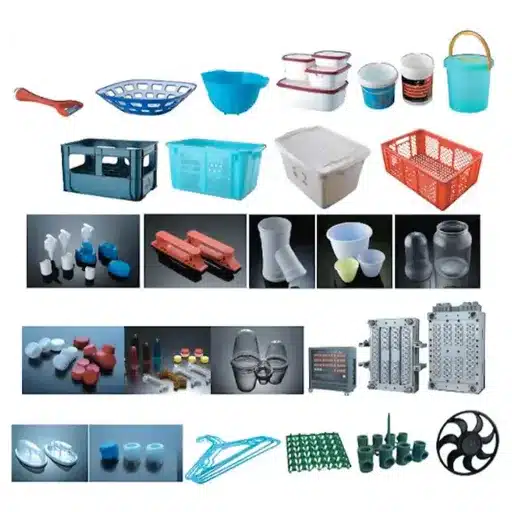
The Latest Developments in HDPE Injection Molding
The latest developments in HDPE injection molding are inseparably linked to the three pillars of sustainability, efficiency, and accuracy.
🤖 Smart Manufacturing
IoT devices and AI-assisted data analytics enable real-time monitoring, data collection, and process optimization through waste reduction.
♻️ Bio-Fillers & Recycled Materials
Production of tough, long-lasting components with low environmental impact using bio-fillers and recycled HDPE materials.
❄️ Advanced Cooling Systems
Astounding reduction in cycle times and enhancement of energy efficiency through innovative cooling methods.
Among the many advancements, the most remarkable one is undoubtedly the use of smart manufacturing technologies with the primacy given to IoT devices and AI-assisted data analytics. With the help of these tools, real-time monitoring and data collection become possible thus equipping the manufacturers to take the right actions, in terms of process optimization, through waste reduction.
Furthermore, exploring the possibilities of bio-fillers and recycled HDPE materials has opened the doors to the production of tough, long-lasting components with a low environmental impact. Moreover, the development of advanced cooling systems has caused an astounding reduction in cycle times and more than enhancement of energy efficiency through these methods.
As a whole, the aforementioned technologies are reconfiguring the sector by empowering the factories to satisfy the increasing demand while keeping compliance with the eco-friendly regulations along the financial limits. It is predicted that HDPE molding will be an even more eco-friendly and scalable alternative for the packaging, automotive, and consumer goods industries, among others.
Injection Molding of HDPE Specific to Industry Needs
Injection molding of HDPE (High-Density Polyethylene) finds ground in key sectors due to its among others strength and lightness and low price and overall profitability.
🏭 Industry-Specific Applications
📦 Packaging Sector
HDPE is the material used for making strong bottles, and caps as well as containers for food and drinks and chemical or household products. The material’s resistance to chemicals, and moisture, in turn, ensures that the product stays in good condition and is safe for consumers.
🚗 Automotive Sector
Used in manufacturing parts such as fuel tanks, batteries, and so on. Besides powered vehicles, the low weight combined with excellent durability not only helps save fuel but also meets the highest requirements in terms of safety.
🏠 Consumer Goods
The uses of injection-molded HDPE vary from toys to utensils, and home appliances materials are the winner of the competition between sturdy and resilient consumer products. Moreover, its eco-friendliness, due to the fact that it is non-toxic and can be recycled, is another reason for its popularity among consumers.
🏥 Healthcare
HDPE is the first choice for medical devices and sterilized packs as a result of its quality of being non-toxic and also hygienic. The medical sector contains applications such as shrink wraps for pharmaceuticals, laboratory sowings, and medical-grade bottles that depend on injection molded HDPE.
🏗️ Building Material Industry
Among others, the excellent mechanical properties of the material, besides its UV light and weather, resistance, make it the perfect choice for not only building pipe systems and barriers but also for construction parts.
The situation in these constituent industries where the emphasis is increasingly put on sustainability and efficiency, points in favor of continuing to rely on and co-opt the use of injection-molded HDPE that is universally accepted as reliable, recyclable, and versatile.
The Future of HDPE Injection Molding
The future of HDPE injection molding is positively correlated with the development of sustainable practices and technological innovations. Adoption of recycled HDPE (rHDPE) in injection molding is gaining ground in view of the increasing global focus on the reduction of the environmental impact. Manufacturers are operating closed-loop recycling systems to cut back on waste and use fewer resources, thereby contributing to sustainable development among the goals.
🚀 Future Trends in HDPE Molding
- IoT-enabled injection molding machines and AI-based production supervision
- Increased efficiency with decline in energy usage
- Advanced formulation to alter HDPE properties for specific applications
- Use of additives or polymer blending for specialized products
- Rising popularity of bio-sourced HDPE options to reduce fossil fuel dependence
Also, the smart manufacturing technology combination, including IoT-enabled injection molding machines and AI-based production supervision is switching on a new style of operation in the traditional business. The respective changes brought about by these improvements include a hike in efficiency, a decline in energy usage, and upholding of accuracy in quality control making the process both cost-effective and eco-friendly.
Another forthcoming trend is the option to alter the HDPE properties via advanced formulation. The manufacturers may depend on the use of additives or polymer blending, for producing materials for particular applications like weight-saving automobile parts, bio-based packaging, or antimicrobial medical products.
Recent trends show that there is also the case of increasing popularity of bio-sourced HDPE options. These materials aim among others to ease the total dependence on fossil fuels, thereby providing a less pathogenic for the industry wanting greener solutions way.
The trends developing in the industry are leading towards a future where HDPE injection molding will be characterized by a mix of innovation, efficiency and sustainability to cope with the changing demand in the world.
Choosing an Injection Molding Service

Criteria for Choosing an Injection Molding Service
It is really important to think about some of the very important factors that will help you to ensure selective quality and reliability when it comes to the choosing of an injection molding service provider.
🎯 Key Selection Criteria
1️⃣ Material Expertise
Check to see if the provider can work with different types of materials, from traditional polymers to renewable ones such as bio-sourced HDPE. This means they are always ready to take on any project and at the same time be eco-friendly.
2️⃣ Technical Capabilities
Make sure that the provider’s equipment and tech are up-to-the-minute machines and technology, especially when it comes to producing intricate or custom parts, thus ensuring precision, efficiency, and scalability.
3️⃣ Experience and Certifications
Sometimes the best way to find out the quality of a company’s product is to look at the certifications and its history, an ISO certification can be a good indicator of trust and standards.
4️⃣ Sustainability Commitment
The increase in consumer awareness, as seen through search trends, is a factor that companies need to consider. Providers that deal with the use of recycled or bio-sourced materials along with waste minimization are those that can deliver environmentally-friendly manufacturing which is the current trend in the market.
5️⃣ Cost and Lead Time
Market players have to be very careful in pricing, along with their ability to meet deadlines that are very short, because of the fast-paced nature of the market.
By incorporating this data-driven approach in evaluating service providers, companies can create partnerships that are efficient, sustainable, and customized to their specific demands.
Provider Evaluation for HDPE Molding Services
It can be of great help to use the latest data from trustworthy sources when deciding on a provider for HDPE molding services. You can gather key insights from the research done on the industry, customer reviews, and company performance metrics online.
🔍 What to Look For:
- Providers with good track records of supplying great products
- Consistency in adhering to specifications
- Implementation of eco-friendly practices
- Advanced techniques like precision molding
- Ability to scale for large-volume productions
You have to look for the providers who have good track records of supplying great products, be consistent with adhering to specifications, and also carry out eco-friendly practices. Besides, the company has to be equipped with advanced techniques, for example, precision molding and the ability to scale for large-volume productions, check the capabilities of the company in such. Companies can draw the line between a data-driven approach and the latest search tools and make a decision that is both well-informed and aligned with their operational as well as environmental goals.
Cost Factors in HDPE Injection Molding
There are several important factors when it comes to evaluating the price of HDPE (High-Density Polyethylene) injection molding.
| Cost Factor | Impact on Budget |
|---|---|
| Material Cost | Usually takes up a huge part of the budget. Varies with market demand, crude oil prices, and supply chain dynamics. |
| Mold Making | Price varies depending on complexity and accuracy of design. |
| Energy Consumption | Significant contributor during the molding process. |
| Production Volume | Higher volumes typically reduce per-unit costs. |
One of the most important is the cost of the material which usually takes up a huge part of the budget, and since HDPE prices vary with the market’s demand, crude oil prices, and also the supply chain dynamics, such material costs are likely to change through time. Moreover, the price of the making molds varies depending on how complicated and accurate the design is. The other cause of the overall cost being high is the consumption of energy during the molding process and also the production volume.
💡 Pro Tip: Businesses can access accurate and current data that will enable them to monitor fluctuations in HDPE prices, spot the supplier with the lowest cost, and also do a comparison of the market rates on the machinery and energy used. Such an approach allows one to have a competitive edge while at the same time ensuring a balance between quality and cost in the injection molding process.
Frequently Asked Questions (FAQ)
❓ What is high-density polyethylene injection molding?
High-density polyethylene injection molding refers to a certain manufacturing process which is specifically meant for obtaining plastic parts made of HDPE resin through it. In this method, hot liquid HDPE is forced into a metal mold, which is usually made of metal, to produce different forms and sizes. Among the various benefits that this method provides, there is the top-notch processability of HDPE and the capacity to create very thin-walled parts in an efficient way. Moreover, HDPE is characterized by its high resistance to shocks and chemicals, thus being applicable in a large variety of fields, beyond just the mentioned plastic bottles and industrial parts. Grasping the subtleties of this molding method can contribute to the enhancement of production processes and product quality.
❓ What are the applications using HDPE material?
The HDPE material finds its way to a variety of applications because of its good qualities. It is usually the first choice for the manufacture of plastic bottles, containers, and wrapping materials. On the other hand, the HDPE is having use in the production of durable goods and parts that need to be strong and rigid, which also makes it a good material for outdoor furniture and plastic lumber.
The versatility of HDPE injection molding allows the setting of intricate components that can bear the brunt of environmental conditions. As it is also certified by the FDA for food contact, HDPE is also regarded as a white knight in the food packaging sector. All in all, HDPE applications are immense and thus, in various fields, this plastic is very much commoditized.
❓ How does the injection molding process work for HDPE parts?
The initial step of the injection molding process for HDPE parts is to heat up the plastic resin until it acquires a melt temperature that is appropriate for injection. The melted HDPE is then injected into the mold, where it gets cooled and takes the desired shape. Through design for manufacturing (DFM), this process can be optimized to ensure that the mold shape is proper for smooth production.
An injection molder is very much important in this regard as the equipment should keep up the right pressure and temperature to produce first-rate injection molded HDPE products. After removal from the mold, the parts are subject to a series of quality tests to check their compliance with the standards set for strength and durability.
❓ What are potential alternatives to HDPE in injection molding?
There are possible substitutes to the HDPE that might be considered by the manufacturers even though HDPE is the choice for a number of applications.
- Polypropylene: Shares similar properties, available for less and has good chemical resistance
- Polycarbonate: Famous for amazing impact strength and transparency, used for safety eyewear and optical lenses
- Compostable plastics: Less harmful than traditional non-biodegradable polymers like HDPE
Each alternative has its own characteristics so it is important to consider the application specific when selecting a material.
❓ What are the benefits of using HDPE in injection molding applications?
There are numerous advantages associated with the use of HDPE in injection molding applications, which have resulted in its wide acceptance among the manufacturers.
- Mechanical strength and rigidity guarantee hard-wearing products with prolonged life-span
- Resistance to chemicals and impacts beneficial for unfriendly environments
- Ability to produce detailed and thin-walled designs eliminates material wastage
- Leads to cutback on production costs
- Hassle-free to process and can be recycled, aligning with eco-friendly manufacturing practices
In general, all these upsides rendering HDPE a suitable material for mass production as well as a broad spectrum of applications.
📚 Reference Sources
Harvard University – Mold Replication in Injection Molding of High Density Polyethylene: Discusses mold replication tests using HDPE on steel inserts, focusing on surface morphology and injection molding techniques. Source
Eastern Illinois University – Investigation of Recycled High Density Polyethylene: Examines composites formed by injection molding, analyzing tensile strength, elongation, and hardness of recycled HDPE. Source
North Carolina State University – HDPE-Based Composites with Pressure-Treated Wood Fibers: Investigates the effects of coupling treatments on wood-plastic composites (WPCs) manufactured through injection molding. Source






